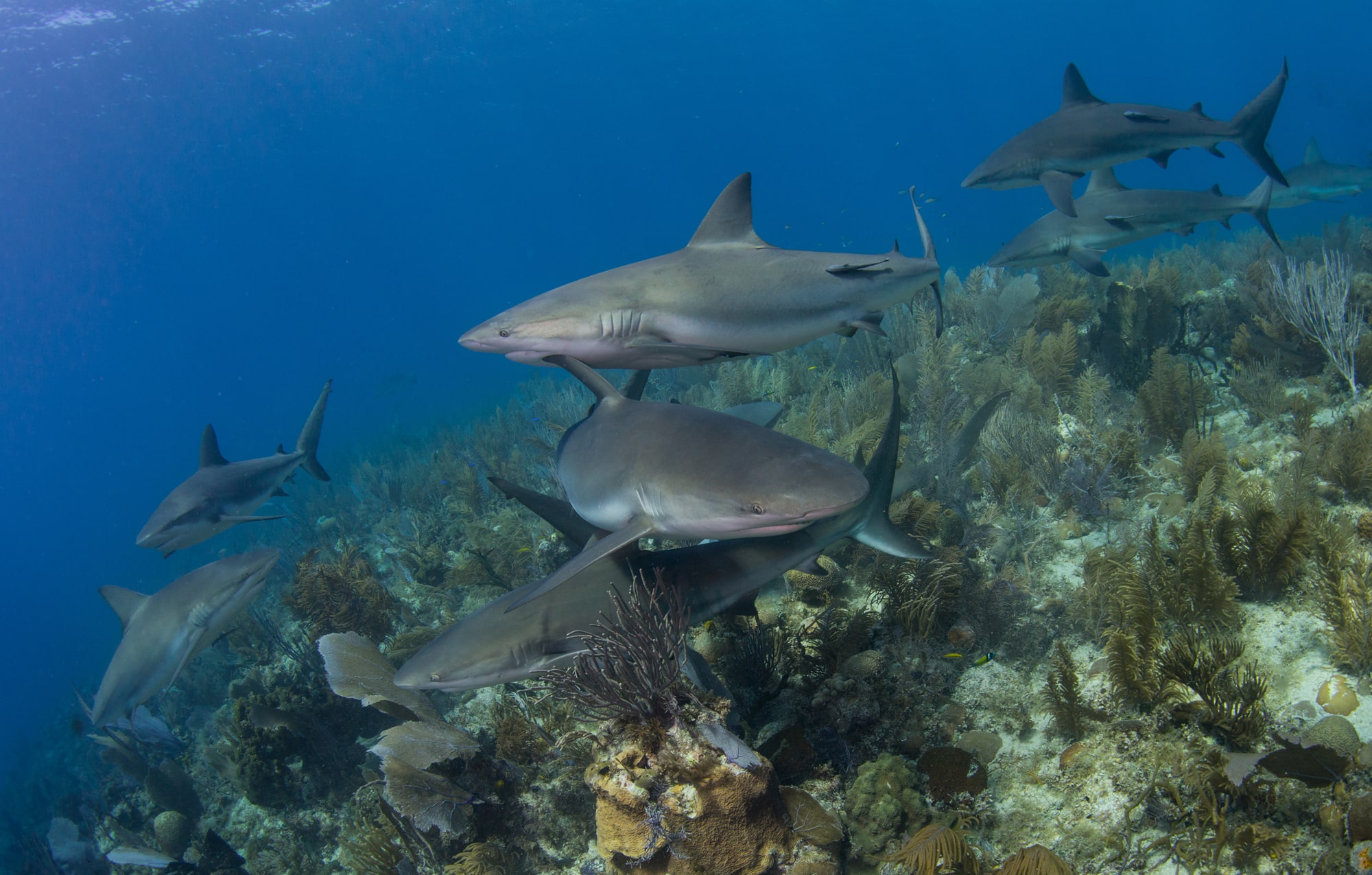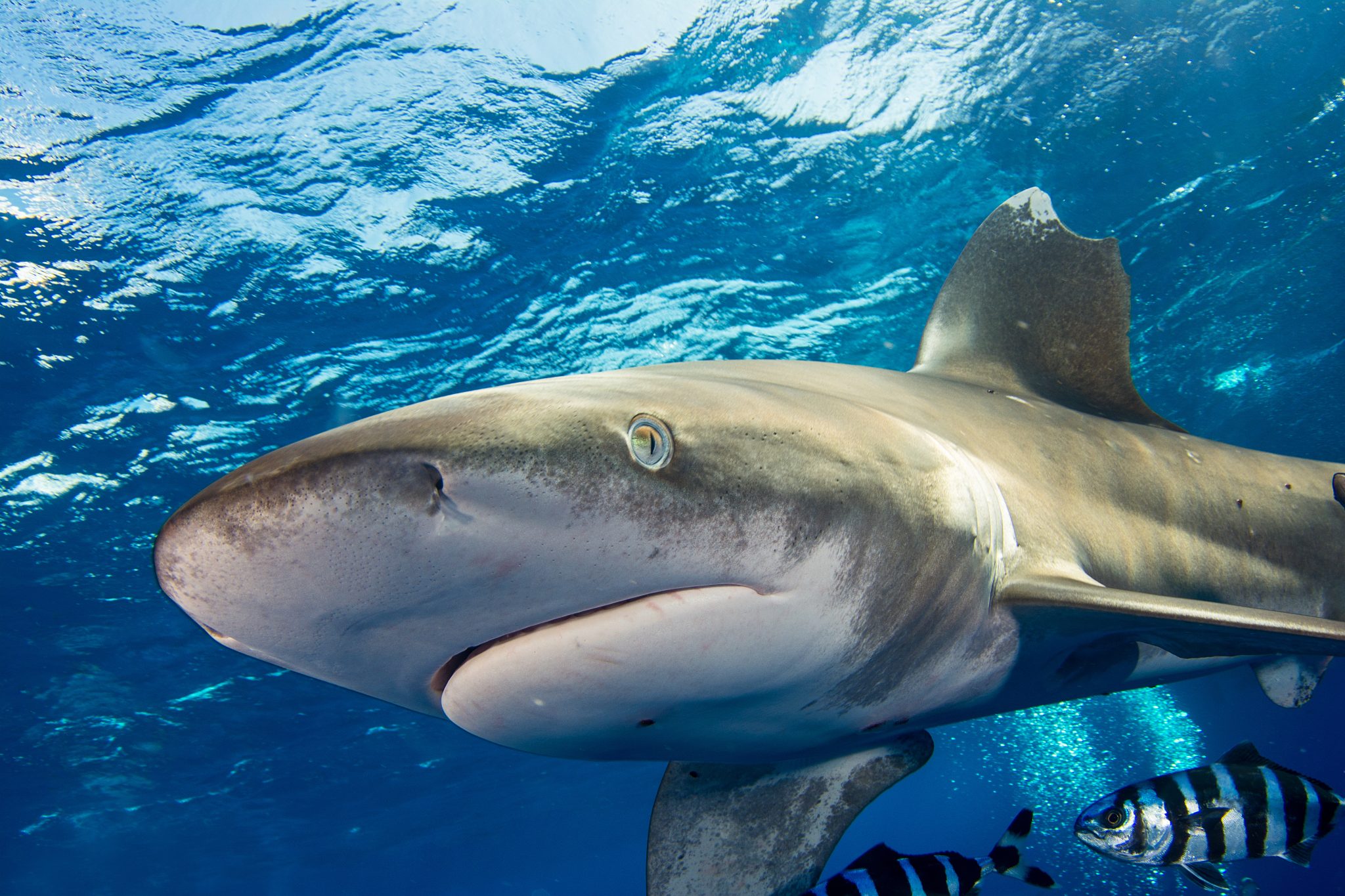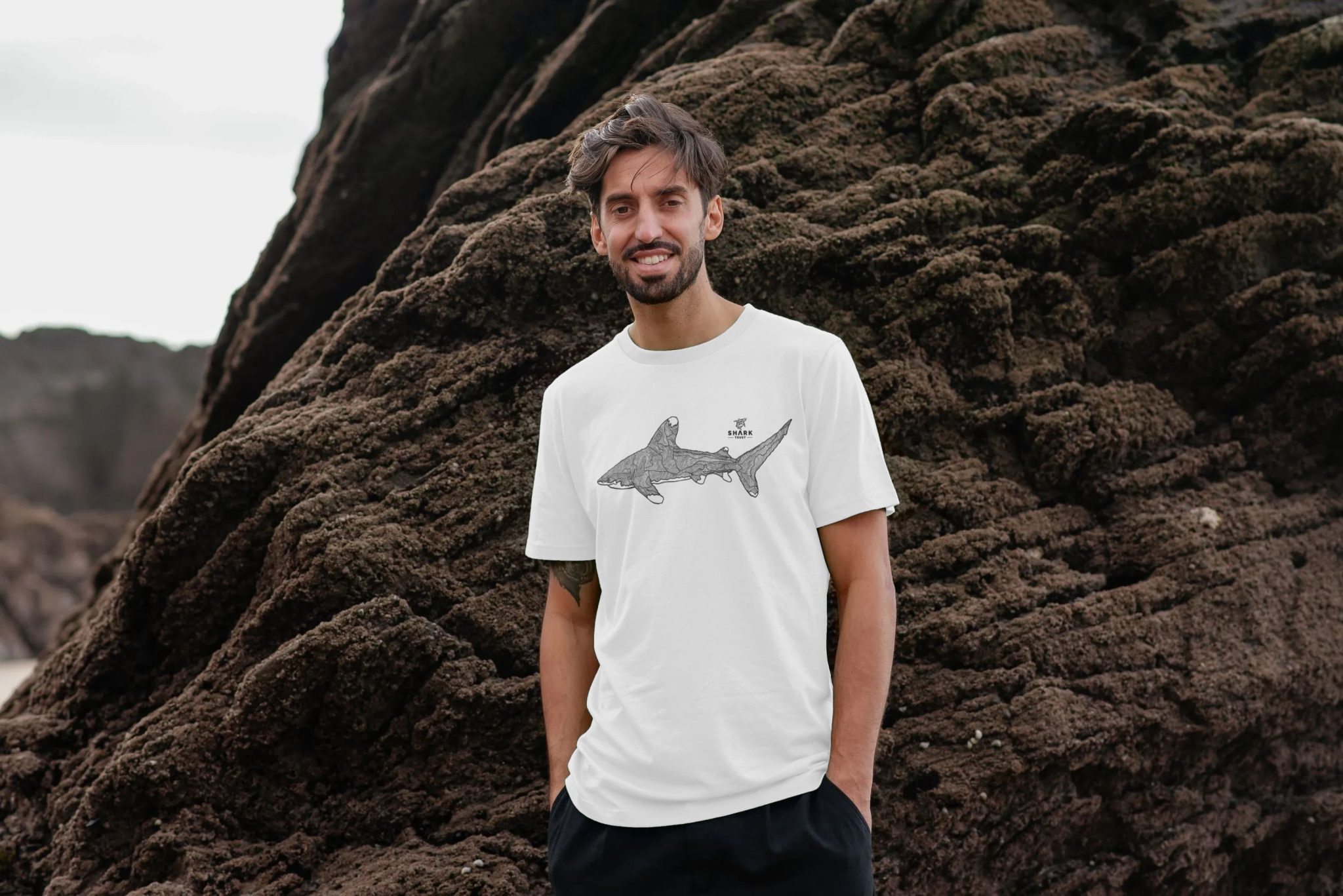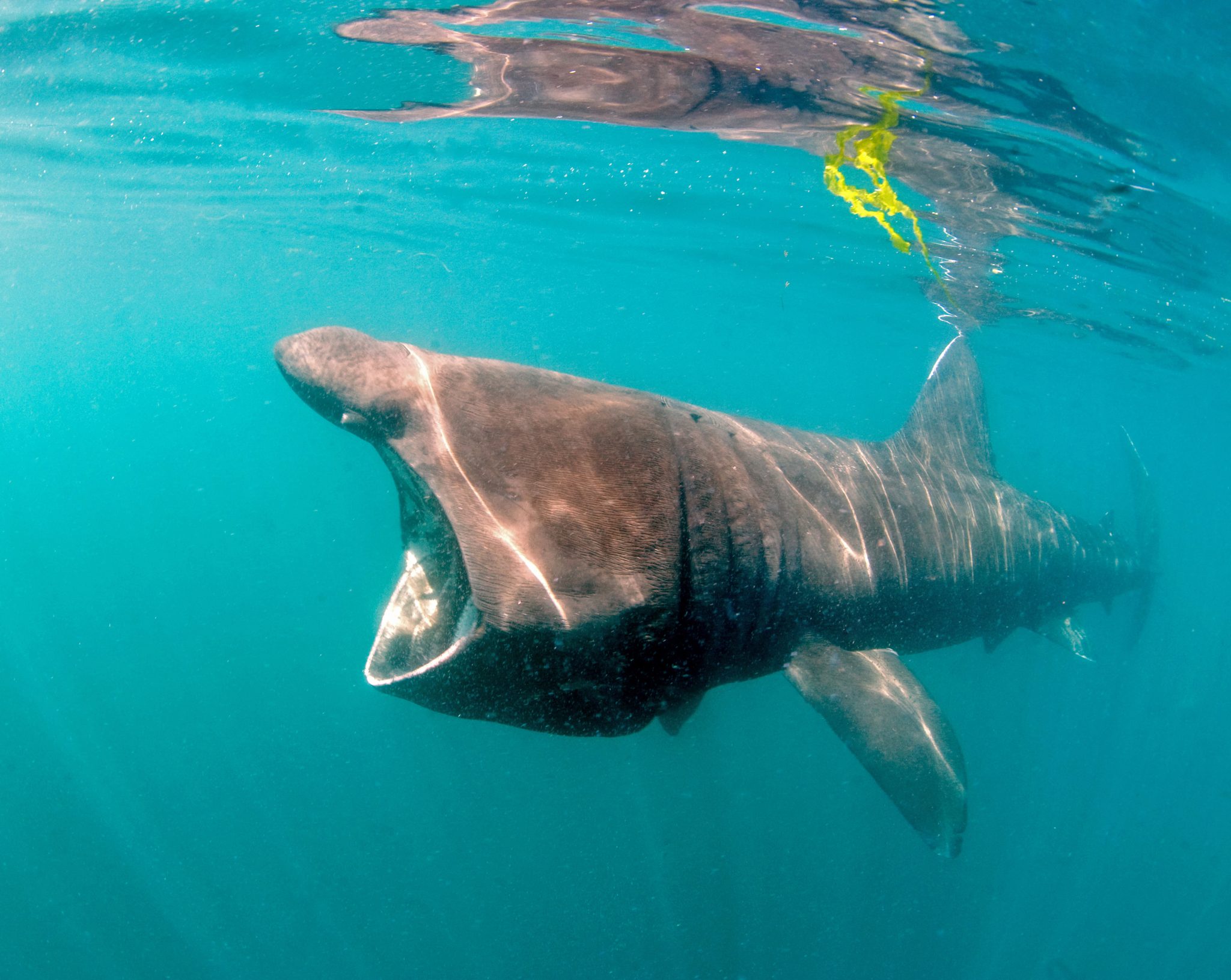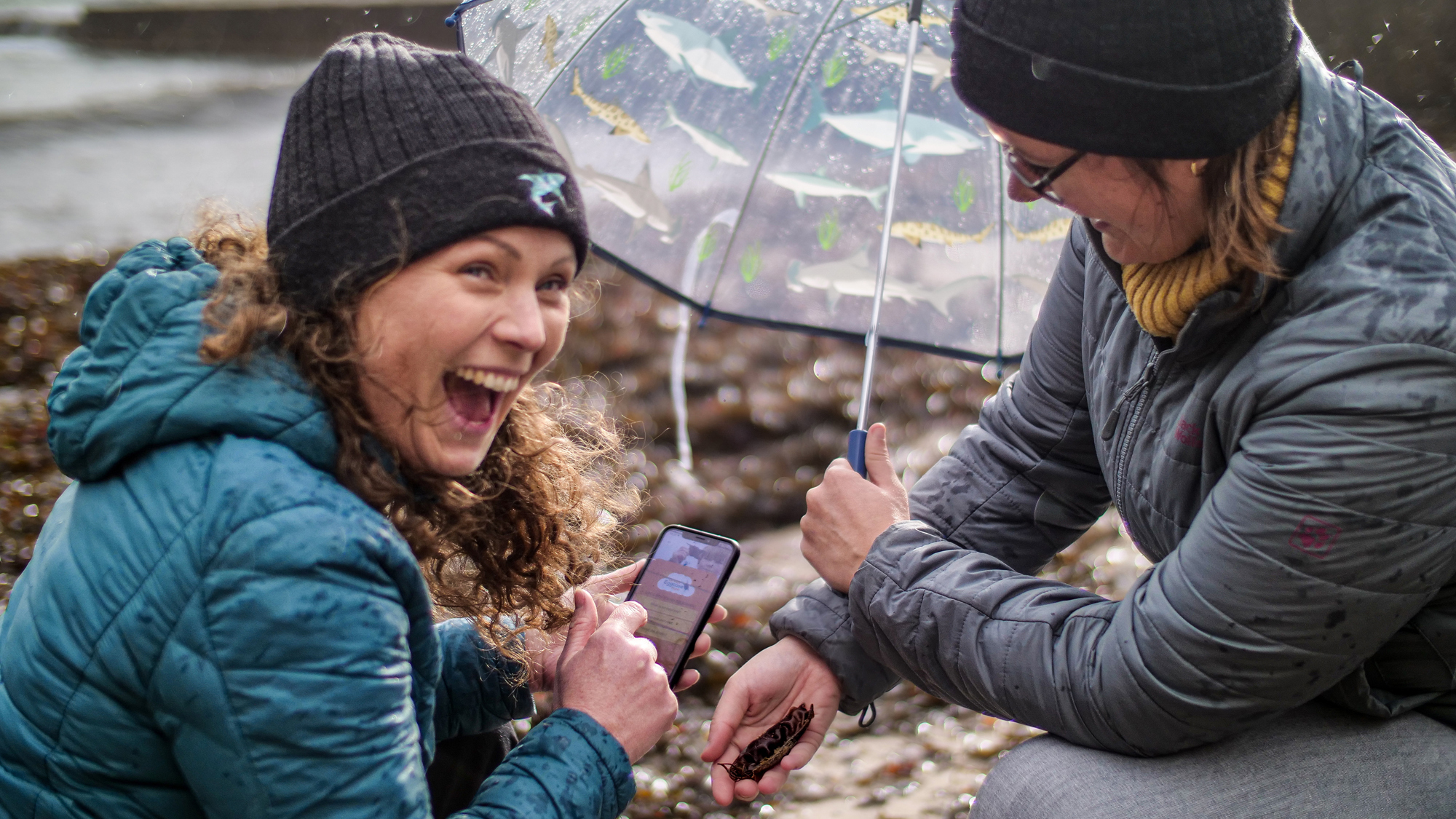Marine Life & Conservation
The Great White Sharks of False Bay, South Africa
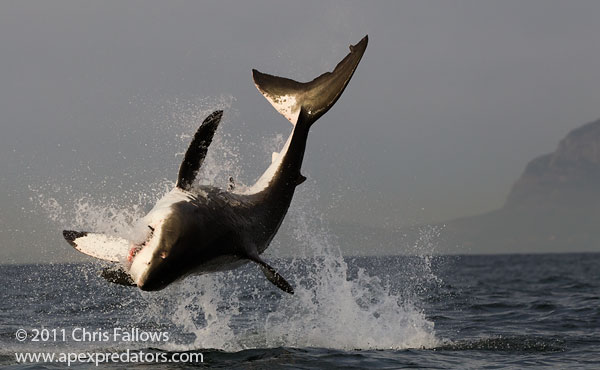
‘Predation! Nine o’clock! 100 metres!’ is not a phrase you will hear shouted on your average day in life but then a day at sea with Apex Shark Expeditions isn’t your average day. Every trip is unique, each guest and each crew member full of excitement and anticipation as we depart for Seal Island before sunrise; hoping to see the magnificent Great White Shark and the other wildlife of False Bay in South Africa. As the sun rises over the mountains surrounding us, as the waters turn golden and the nautical miles skip by, we hold on tight and prepare for the adventure of a lifetime.
Seal Island is the premier location to observe Great White Sharks and their natural hunting behaviour upon Cape Fur Seals. It is Africa’s largest island-bound seal colony, with 64,000 Cape Fur Seals and lies within the waters of False Bay in the Western Cape. False Bay hosts an incredible array of wildlife including the seals, a number of bird species, dolphin and whale species and the sharks that this bay is renowned for. It truly is a marine safari. For those that have been on safari, you will know how rare it is to see a predatory event. That we observe such natural predations regularly at Seal Island is what sets this area apart from other locations worldwide.
As we arrive at Seal Island you can’t help but be overcome by the beauty of this location, of the sheer number of seals and the bird species resident on this small rocky island. The seals leave the island in their groups as they head out of False Bay to feed and we observe these groups carefully for signs that the sharks are in hunting mode. The white shark is an ambush predator, hunts from the depths below the groups of seals and launches itself out of the water in pursuit of its prey. They have earned the name ‘flying sharks’ from this unique hunting behaviour that is particularly prevalent at Seal Island. You can literally feel the tension on the boat as both crew and guests scan the horizon eagerly, watching the groups of seals like hawks in the hope of seeing a white shark breaching from the water.
‘Predation! Nine o’clock! 100 metres!’ A white shark leaps from the water in pursuit of a seal from the group and thanks to our careful observation we have witnessed this spectacle in motion. We use a clock system onboard to denote the location of a predation event and all guests were lucky enough to witness the shark literally flying through the air. As quickly as it occurred, as quickly the predation event is over and flocks of Cape Kelp Gulls congregate at the site of the kill. We watch the shark swimming on the surface before it disappears back to the depths. To see your first white shark in the ocean is incredible; to see your first white shark air-borne goes way beyond your wildest dreams. The agility of these sharks and their sheer size is awe inspiring. It is fair to say that witnessing such predation events leaves us all speechless. There are only approximately 3000 white sharks left in the wild and it is a privilege to see them and their natural behaviour. As with any safari, our guests know we cannot guarantee these events and they were delighted to have been a part of this moment. On some days we do not see the natural predation events; on others we are fortunate enough to witness anything from one to more than forty events.
‘Blink and you will miss it guys. Do NOT take your eyes off the decoy’ is a phrase I repeat daily for our guests as we tow our decoy seal behind the boat in the hope of attracting a white shark to the seal and witnessing the shark leaping. Our decoy seal is made of neoprene, it is harmless to the sharks and we are careful not to tow for too long or too often as we do not want to waste the sharks’ hunting energy. Whilst the tow has no guarantee of being successful, it can be the perfect opportunity to capture the flying sharks on film and a hush descends upon the entire boat as we begin. It is the one time in the day you can hear a pin drop as everyone concentrates silently. We are all watching the decoy, cameras bleep quietly as each autofocus adjusts and arms begin to ache as we motor along slowly waiting for that special moment. Each breach is as unique as each shark and they vary from slow motion vertical lunges to cart wheeling through the air as the shark twists and turns on a dime. Today we had success and the boat goes wild as the shark leaps for the decoy. The guests’ shouts and whoops adding to the buzz as we compare what we saw and check our cameras to see who captured the moment.
As the sun lifts itself higher in the sky and our guests chat happily whilst getting to know each other, we set anchor near the island and begin the process of attracting a shark to our vessel. This part of the morning is when we can observe the sharks behaving in a more relaxed manner as they are no longer in hunting mode. The boat affords excellent viewing opportunities to watch from the surface and we also offer cage diving for those that wish to see the white shark at eye level. Whilst many of our guests wish to go cage diving, the views from the top deck of our vessel are superb and it is by no means necessary to dive in order to have a fantastic view of the sharks and their behaviours.
At no point do we feed the sharks and our bait is used purely as an attractant. We also have a stationary decoy seal that we place on the surface, which is often of more interest to the sharks than the bait itself. Our first shark arrives after a patient wait; this is the time when I find the guests’ opinions of white sharks really changes as they clamour to the boat side to see our visitor. They observe the shark moving slowly, gracefully through the water as it moves in towards our bait and decoy. The shark is curious and demonstrates the ease with which it can approach, investigate and bank away into the depths so effortlessly. This is not the hunting behaviour we observed earlier, this is a shark calmly investigating novel objects in its environment as it goes about its business.
If a shark stays with us for a period of time you can get to know its personality and observe its unique markings. It is these moments that allow us to identify individuals each season and observe them year on year as they grow into maturity. Each shark behaves differently around the boat and it is clear they have very distinct personalities. We have smaller sharks that are playful around the bait, nipping as we pull the bait gently away and returning to chase the bait repeatedly. We have larger sharks that are slower, more relaxed and disinterested in the bait but keen to investigate the decoy seal and move alongside the boat. They are as unique as you and I in their behaviours and a joy to watch.
For those that wish to go cage diving now is the time and it is fair to say many guests are nervous at this point. The shark is after all a predator, we have been brought up to fear it and we are entering into its own environment. There is nothing to fear though; the crew work hard to ensure the comfort and safety of our guests and we ensure it is a relaxed and enjoyable experience. I have witnessed guests laughing and giggling through their snorkels as the shark passes in-front of them and exclamations of how huge the sharks are at eye level. The divers raise their heads above the surface to excitedly share the news with the rest of the guests that they saw the shark pass by. We operate our diving at the surface using mask and snorkel and you do not need to be a qualified diver to cage dive with us. The advantage of being at the surface with your head above water is that we can shout when to duck down and in which direction to look to ensure you see the shark. This surface communication gives the very best opportunity to ensure a successful encounter.
As the diving comes to a close later in the morning and our guests are relaxing with some food and drinks onboard, our trip is by no means over. Before heading back to port we continue on our safari around Seal Island to observe the behaviours of the Cape Fur Seals and other wildlife on the island. Whilst this island is home to many seals, it is also home to three different species of cormorant, a colony of South African Penguins and the Cape Kelp Gulls. It is a wonderful experience watching the young seals playing in the waters close to the north eastern part of the island as the females bask in the sunshine. The noise as they communicate is quite something as we pass by.
As we leave Seal Island and the sharks behind for another day, we look for other wildlife within the bay such as whales and dolphin. Common dolphin are especially common in False Bay in April but can be seen year round on approximately 20% of our trips. These beautifully patterned dolphins are a delight as they swim alongside us and ride our bow wave.
Back ashore and it is time for our guests to enjoy some hot drinks as they swap email details for those ever important photographs and talk about the events of the morning. It is a well known fact that the white shark is now an endangered species and to see one of these sharks in the wild is a privilege and life changing moment for our guests. I can still remember the first time I joined an Apex expedition in 2002, my first cage diving experience and the thrill of seeing my first white shark. It literally changed my life, my view of these misunderstood animals and began a lifelong passion for the sharks. Now here I am working for Apex Shark Expeditions and sharing my passion with our guests. I look forward to you joining us on your trip of a lifetime with the sharks and to witnessing how these sharks will change your life too.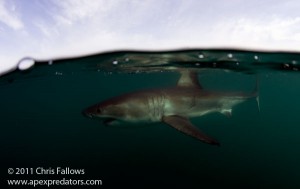
For further information regarding Apex Shark Expeditions please visit us at http://www.apexpredators.com/.
A blog of Kat Hodgson’s experiences and other Apex expedition blogs can be found at http://www.apexpredators.com/blog.html.
Marine Life & Conservation
Leading UK-based shark conservation charity, the Shark Trust, is delighted to announce tour operator Diverse Travel as a Corporate Patron
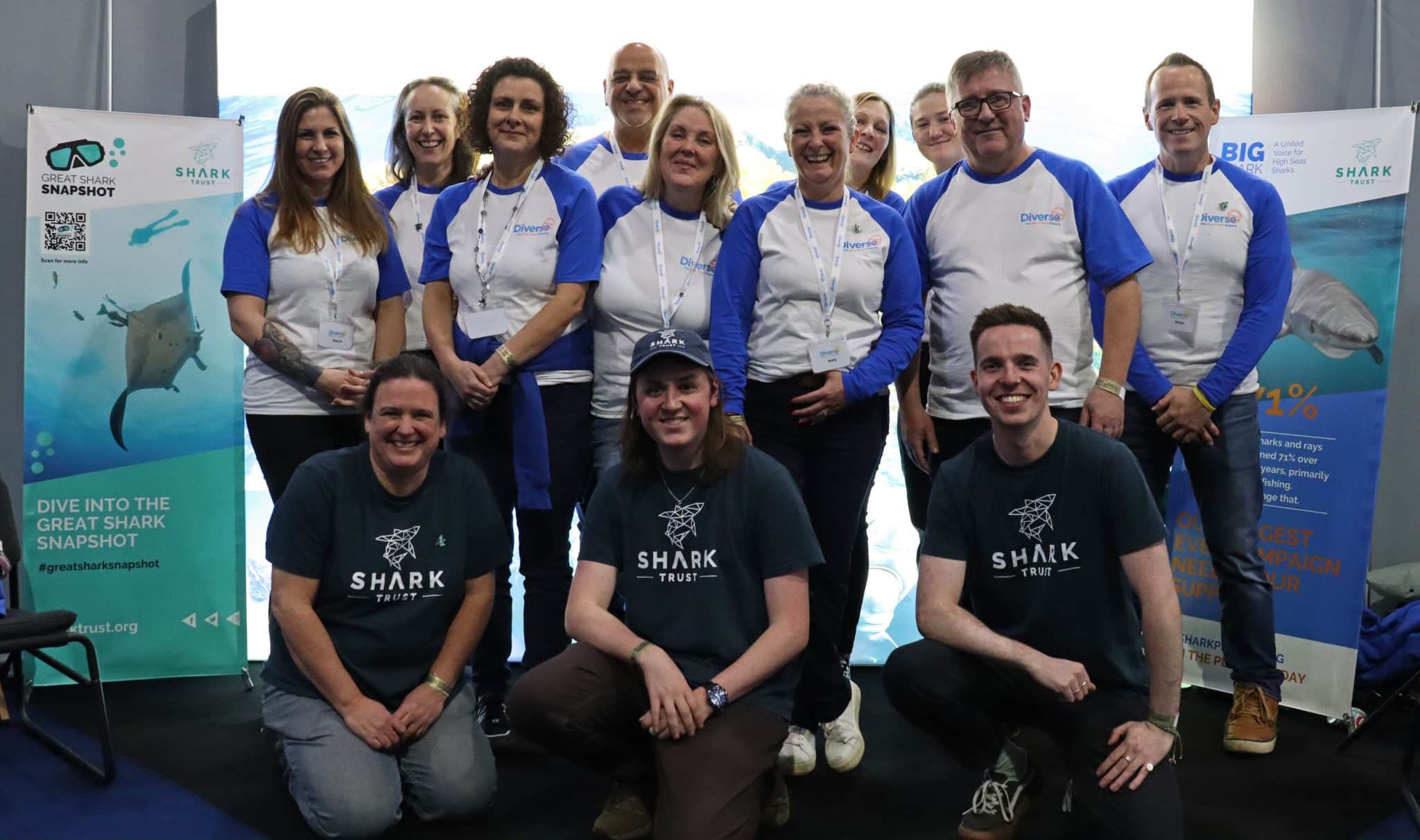
 Corporate Patrons provide a valuable boost to the work of The Shark Trust. The Trust team works globally to safeguard the future of sharks, and their close cousins, the skates and rays, engaging with a global network of scientists, policymakers, conservation professionals, businesses and supporters to further shark conservation.
Corporate Patrons provide a valuable boost to the work of The Shark Trust. The Trust team works globally to safeguard the future of sharks, and their close cousins, the skates and rays, engaging with a global network of scientists, policymakers, conservation professionals, businesses and supporters to further shark conservation.
Specialist tour operator Diverse Travel has operated since 2014 and is committed to offering its guests high quality, sustainable scuba diving holidays worldwide. Working together with the Shark Trust will enable both organisations to widen engagement and encourage divers and snorkellers to actively get involved in shark conservation.
“Sharks are truly at the heart of every diver and at Diverse Travel, we absolutely share that passion. There is nothing like seeing a shark in the wild – it’s a moment that stays with you forever!” says Holly Bredin, Sales & Marketing Manager, Diverse Travel.
“We’re delighted to celebrate our 10th year of business by becoming a Corporate Patron of the Shark Trust. This is an exciting partnership for Diverse and our guests. We will be donating on behalf of every person who books a holiday with us to contribute towards their vital shark conservation initiatives around the world. We will also be working together with the Trust to inspire divers, snorkellers and other travellers to take an active role – at home and abroad – in citizen science projects and other activities.”
Paul Cox, CEO of The Shark Trust, said:
“It’s an exciting partnership and we’re thrilled to be working with Diverse Travel to enable more divers and travellers to get involved with sharks and shark conservation. Sharks face considerable conservation challenges but, through collaboration and collective action, we can secure a brighter future for sharks and their ocean home. This new partnership takes us one more valuable step towards that goal.”
For more information about the Shark Trust visit their website here.
For more about Diverse Travel click here.
Marine Life & Conservation
Shark Trust Asks Divers to help with Shark Sightings this Global Citizen Science Month
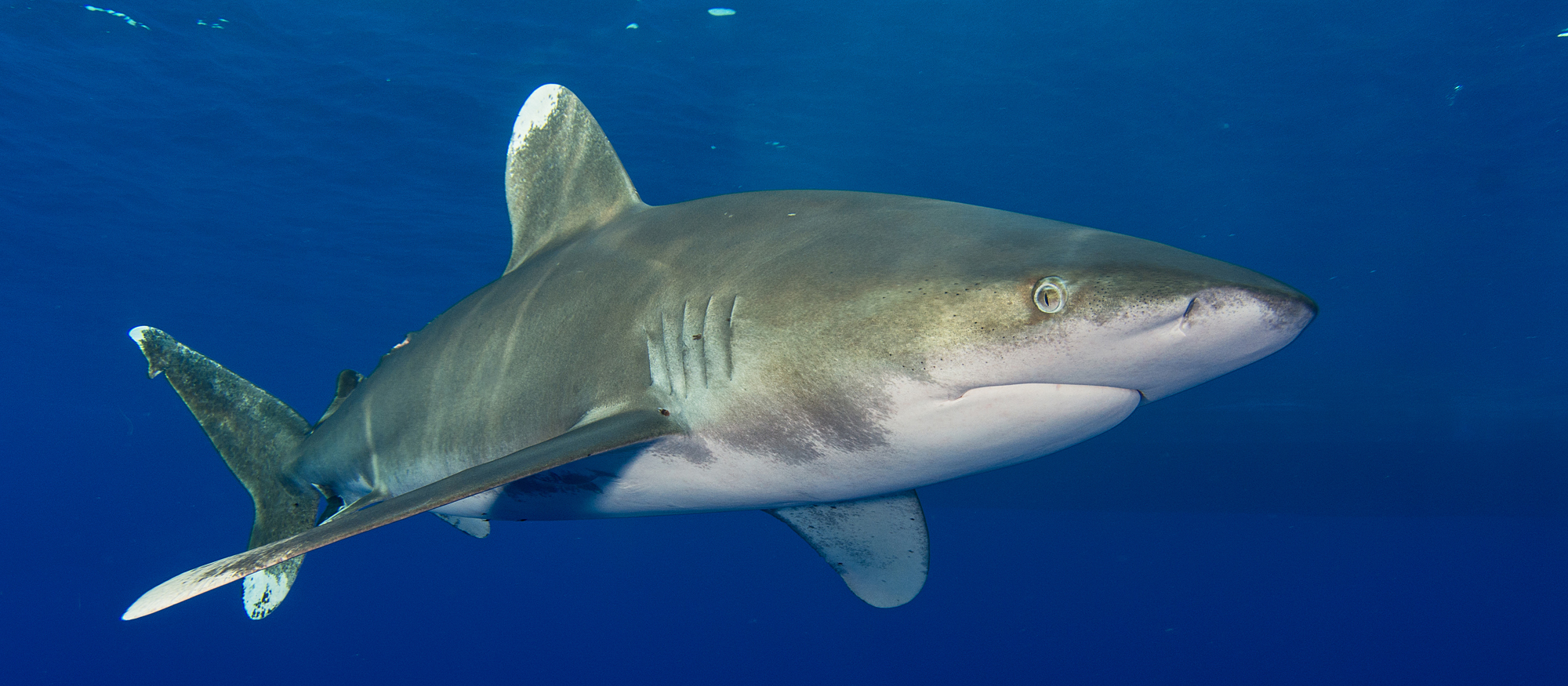
 Whether you are stuck for ideas of what to do with the kids or are off on the dive trip of your dreams. You can get involved in Citizen Science Month and help the Shark Trust by providing vital data about sharks are rays both close to home and further afield.
Whether you are stuck for ideas of what to do with the kids or are off on the dive trip of your dreams. You can get involved in Citizen Science Month and help the Shark Trust by providing vital data about sharks are rays both close to home and further afield.
In addition to reporting the sharks and rays you see on your dives, the eggcases you find on the beach, the Shark Trust is looking for some specific data from divers who are asked to report any Oceanic Whitetip and Basking Sharks.
Oceanic Whitetip Sharks
The Shark Trust are looking specifically for Oceanic Whitetip Shark sightings over the coming weeks and months. So, if you are diving anywhere in the world, please report your sightings via the website or app.
Website: https://recording.sharktrust.org/
App: Search The Shark Trust in your app store
The Oceanic Whitetip. Known for their incredibly long dorsal and pectoral fins, this species was once the most abundant oceanic-pelagic species of shark on the planet.
Large and stocky, they are grey or brown above, and white below and famous for their huge rounded first dorsal fin and paddle-like pectoral fins. The fins also highly prized within the shark fin trade. Whilst they are mostly solitary, Oceanic Whitetips do occasionally hunt in groups.
An inquisitive species, they were easy prey for fisheries. Combined with their low reproductive rate, they were inevitably at high risk of population depletion. And declines of up to 99% have been reported in certain sea areas. They are listed as Critically Endangered on the IUCN Redlist (2019).
Conservation efforts to discourage further declines include listing on CITES Appendix II and CMS Appendix I. They’re also the only species prohibited from take by all the Tuna RFMOs (Regional Fisheries Management Organisations). However, these measures do not mean that Oceanic Whitetips are not still caught – whether targeted or as bycatch – in some parts of the world. With populations declining at such a high rate, effective implementation of management measures is essential to ensure that the species can recover.
If you are lucky enough to get an image of an Oceanic Whitetip and you record your sighting on the Shark Trust app or website YOU CAN WIN! All images submitted with sightings, that also give consent to use in conservation messaging, will be in with a chance to win an Oceanic Whitetip T-shirt and mug. The competition will run until the end of “Shark Month” in July – so keep those sightings (and images) coming in.
Basking Sharks
Basking Shark (Cetorhinus maximus) season is upon us, and the Shark Trust is asking everyone to keep an eye out for these majestic giants over the summer months. If you see any, you can record your sighting to the Basking Shark Sightings database.
Each year, these mighty fish return to British waters to feed on plankton. You may see one, (or a few if you’re really lucky) from around April-October. They can be seen feeding at the surface of the water, where they look like they’re basking in the sun. Thus, their name!
Sighting hotspots around the British Isles include southwest England, Isle of Man, north coast of Ireland, and western Scotland. The Sea of the Hebrides is the most prolific sightings area in Scotland, but they have been spotted all around the coast and have even ventured into some of the sea lochs. The Shark Trust has received thousands of sightings since the Basking Shark project began, but more data is needed to truly understand what is going on with population numbers and distribution. You can help by recording your sightings this summer.
Great Eggcase Hunt
The Shark Trust has an Easter Egg Hunt with a difference for you to try. Take part in the Great Eggcase Hunt and get involved with a big citizen science project that helps shark, ray and skate conservation. And it’s an enjoyable activity for all the family.
The Shark Trust also want snorkellers and divers to record their underwater eggcase findings. Underwater records help pinpoint exactly where sharks and skates are laying their eggs and can help link to beach records. Learning the depth and substrate that they lay on also helps better understand the species.
Find out more: https://www.sharktrust.org/great-eggcase-hunt
Whether you are diving, snorkelling or exploring on the beach you can take part in Citizen Science Month and get actively involved in shark and ray conservation. Find out more: www.sharktrust.org
-

 News3 months ago
News3 months agoHone your underwater photography skills with Alphamarine Photography at Red Sea Diving Safari in March
-

 News2 months ago
News2 months agoCapturing Critters in Lembeh Underwater Photography Workshop 2024: Event Roundup
-

 Marine Life & Conservation Blogs2 months ago
Marine Life & Conservation Blogs2 months agoCreature Feature: Swell Sharks
-

 Blogs2 months ago
Blogs2 months agoMurex Resorts: Passport to Paradise!
-

 Blogs2 months ago
Blogs2 months agoDiver Discovering Whale Skeletons Beneath Ice Judged World’s Best Underwater Photograph
-

 Gear News3 months ago
Gear News3 months agoBare X-Mission Drysuit: Ideal for Both Technical and Recreational Divers
-

 Gear Reviews2 months ago
Gear Reviews2 months agoGear Review: Oceanic+ Dive Housing for iPhone
-

 Marine Life & Conservation2 months ago
Marine Life & Conservation2 months agoSave the Manatee Club launches brand new webcams at Silver Springs State Park, Florida



